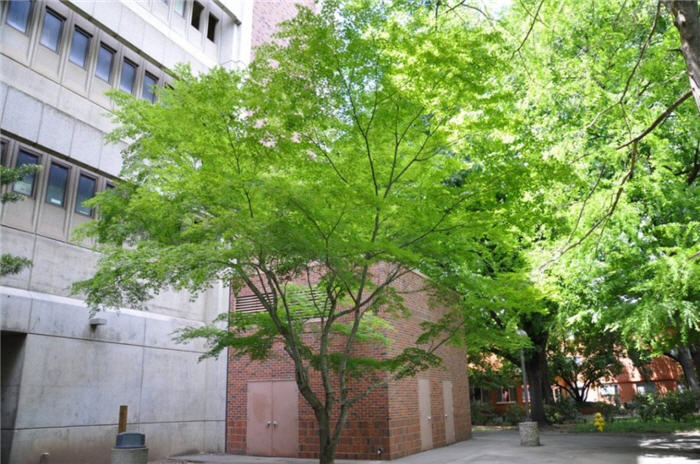| Botanical Name: Gleditsia triacanthos var. inermis | |
| Common Name: Honeylocust |

-
Anatomy
-
Culture
-
Design
Plant Type
Tree
Height Range
25-40', 40-60'
Flower Color
n/a
Flower Season
n/a
Leaf Color
Light Green, Yellow Green
Bark Color
Brown, Grey
Fruit Color
n/a
Fruit Season
n/a
Sun
Full, Half
Water
Medium
Growth Rate
Fast
Soil Type
Sandy, Clay, Loam, Rocky, Unparticular
Soil Condition
Average, Rich, Poor, Well-drained, Moist, Dry
Soil pH
Acid, Neutral, Basic
Adverse Factors
n/a
Design Styles
English Cottage, Formal, Mediterranean, Ranch, Woodland
Accenting Features
Fall Color
Seasonal Interest
Winter, Fall
Location Uses
Background, Parking Strip, Parking Lot, Street Tree
Special Uses
Shade Tree
Attracts Wildlife
Birds, Wildlife
Information by: Stephanie Duer
Photographer:
Photographer:
-
Description
-
Notes
Honeylocust are prized for their fine-textured leaves that provide a pleasant, dappled shade. Generally with light green leaves; some cultivars have yellow spring growth. Open and spreading crown makes for a fine shade tree. Bark is a greyish-brown and furrowed. sizes range from 25 to 50 feet or more, with a spread generally less than the height. Golden yellow fall color and open winter silhouette provides attractive fall and winter appearance. Deciduous.
Withstands a wide range of conditions, including high pH, salts, soil type, and drought. Best growth occurs in rich, well drained soil wit hregular watering. Overplanting has led to increases in some diseases and pests. See the guide for planting and pruning instructions.